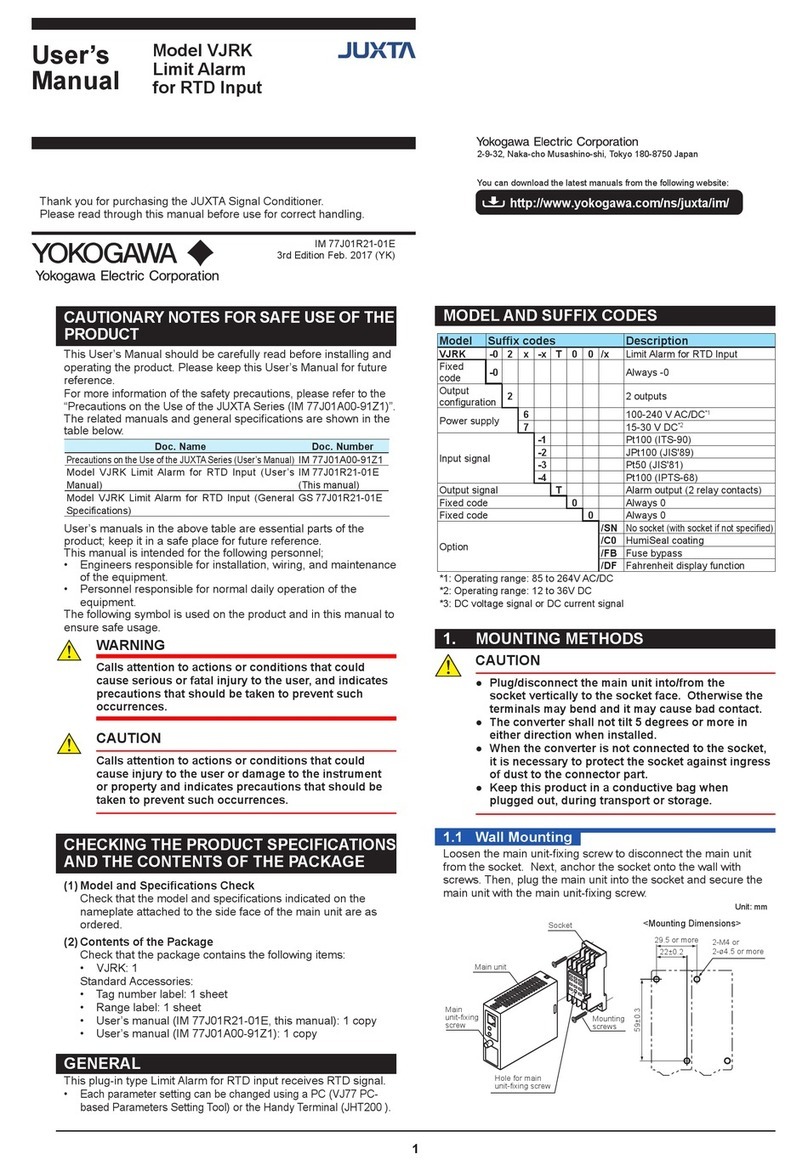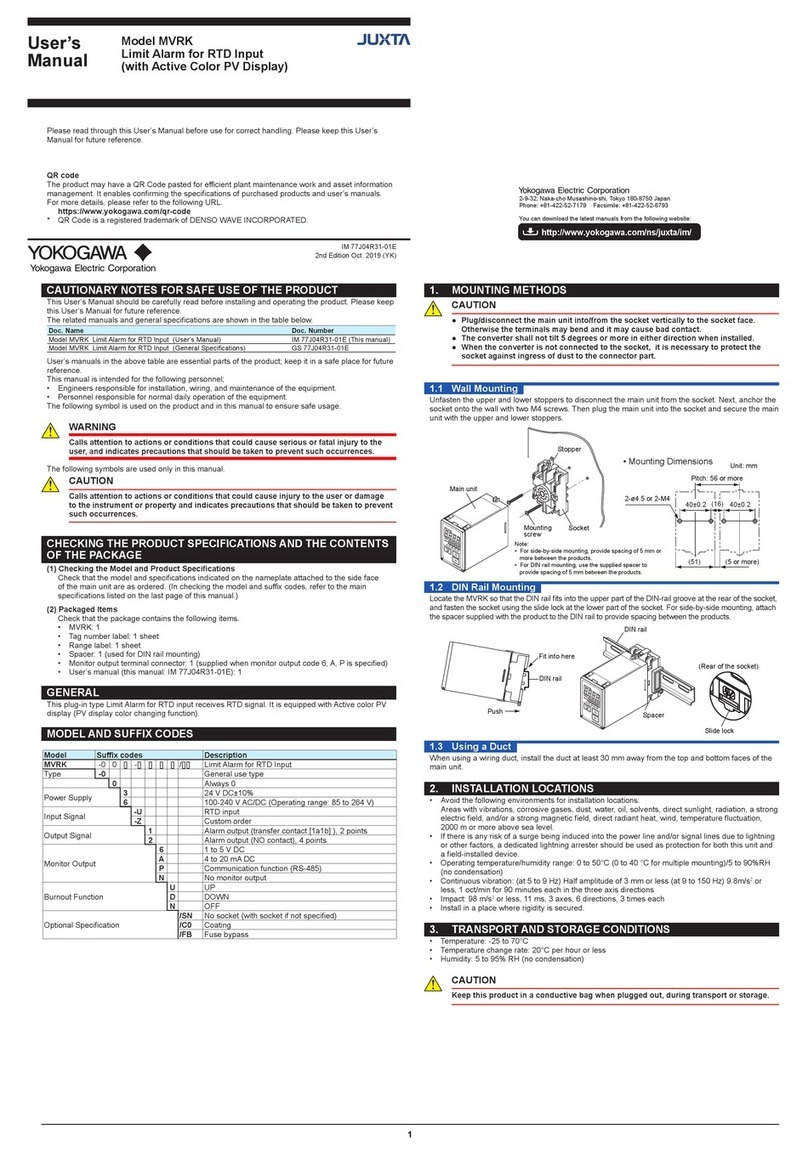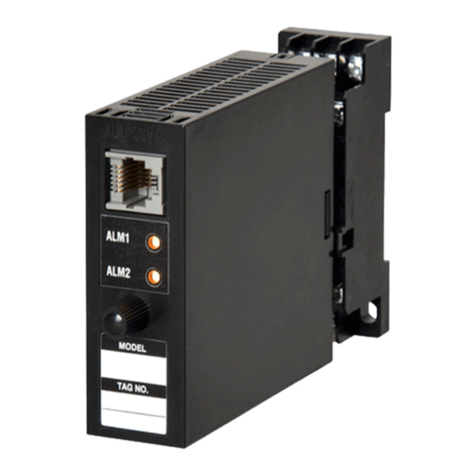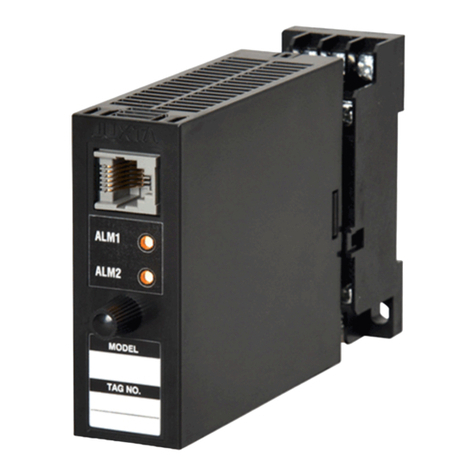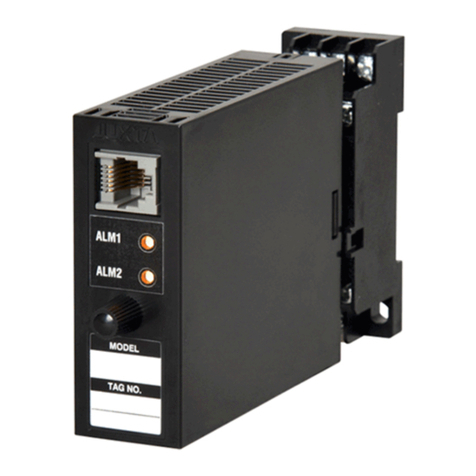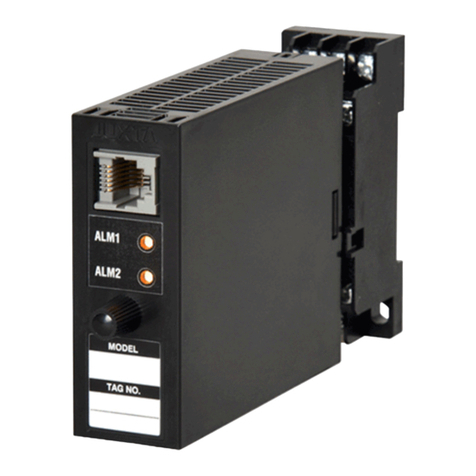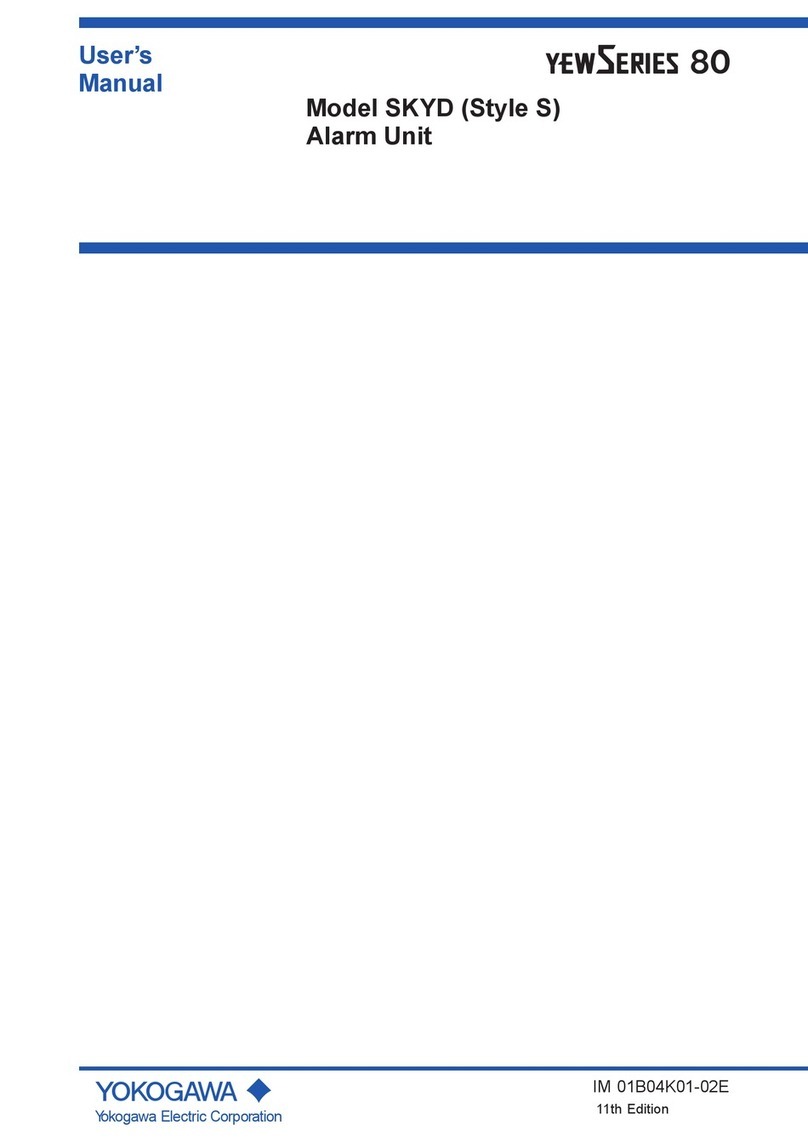
User’s
Manual
2-9-32, Naka-cho Musashino-shi, Tokyo 180-8750 Japan
Phone: +81-422-52-7179 Facsimile: +81-422-52-6793
http://www.yokogawa.com/ns/juxta/im/
You can download the latest manuals from the following website:
1
CAUTIONARY NOTES FOR SAFE USE OF THE PRODUCT
This User’s Manual should be carefully read before installing and operating the product. Please keep
this User’s Manual for future reference.
The related manuals and general specications are shown in the table below.
Doc. Name Doc. Number
Model MVHK Limit Alarm for DC Input (Userʼs Manual) IM 77J04H31-01E (This manual)
Model MVHK Limit Alarm for DC Input (General Specications) GS 77J04H31-01E
User’s manuals in the above table are essential parts of the product; keep it in a safe place for future
reference.
This manual is intended for the following personnel;
• Engineers responsible for installation, wiring, and maintenance of the equipment.
• Personnel responsible for normal daily operation of the equipment.
The following symbol is used on the product and in this manual to ensure safe usage.
WARNING
Calls attention to actions or conditions that could cause serious or fatal injury to the
user, and indicates precautions that should be taken to prevent such occurrences.
The following symbols are used only in this manual.
CAUTION
Calls attention to actions or conditions that could cause injury to the user or damage
to the instrument or property and indicates precautions that should be taken to prevent
such occurrences.
CHECKING THE PRODUCT SPECIFICATIONS AND THE CONTENTS
OF THE PACKAGE
(1) Checking the Model and Product Specications
Check that the model and specications indicated on the nameplate attached to the side face
of the main unit are as ordered. (In checking the model and sux codes, refer to the main
specications listed on the last page of this manual.)
(2) Packaged Items
Check that the package contains the following items.
• MVHK: 1
• Tag number label: 1 sheet
• Range label: 1 sheet
• Spacer: 1 (used for DIN rail mounting)
• Receiving resistor: 1 (supplied when the input signal code “A,” optional specication code
“/R100” or “/R250” is specied)
• Monitor output terminal connector: 1 (supplied when monitor output code 6, A, P is specied)
• User’s manual (this manual: IM 77J04H31-01E): 1
GENERAL
This plug-in type Limit Alarm for DC input receives DC current or DC voltage signal. It is equipped
with Active color PV display (PV display color changing function).
MODEL AND SUFFIX CODES
Model Sux codes Description
MVHK -[] 0 [] -[] [] [] 0 /[][] Limit Alarm for DC Input
Type
-0 General use type
-1 JK12 type (The terminal assignment is same as that of
Yokogawa’s JK12 and MHKW.)
-2 Fail output type
0Always 0
Power Supply 324 V DC±10%
6100-240 V AC/DC (Operating range: 85 to 264 V)
Input Signal
-6 1 to 5 V DC
-A 4 to 20 mA DC (with 250 Ω receiving resistor)
-U DC voltage or DC current signal
-Z Custom order
Output Signal
1Alarm output (transfer contact [1a1b] ), 2 points
2Alarm output (NO contact), 4 points
3Alarm output 2points, Fail output 1point
Monitor Output
61 to 5 V DC
A4 to 20 mA DC
PCommunication function (RS-485)
NNo monitor output
0Always 0
Optional Specication
/SN No socket (with socket if not specied)
/R100 With 100 Ω receiving resistor
/R250 With 250 Ω receiving resistor
/C0 Coating
/FB Fuse bypass
/F1 Alarm 1: NO, Alarm 2: NO, Fail output: NO
/F2 Alarm 1: NC, Alarm 2: NO, Fail output: NO
/F3 Alarm 1: NO, Alarm 2: NC, Fail output: NO
/F4 Alarm 1: NC, Alarm 2: NC, Fail output: NO
/F5 Alarm 1: NO, Alarm 2: NO, Fail output: NC
/F6 Alarm 1: NC, Alarm 2: NO, Fail output: NC
/F7 Alarm 1: NO, Alarm 2: NC, Fail output: NC
/F8 Alarm 1: NC, Alarm 2: NC, Fail output: NC
1. MOUNTING METHODS
CAUTION
●Plug/disconnect the main unit into/from the socket vertically to the socket face.
Otherwise the terminals may bend and it may cause bad contact.
●The converter shall not tilt 5 degrees or more in either direction when installed.
●When the converter is not connected to the socket, it is necessary to protect the
socket against ingress of dust to the connector part.
1.1 Wall Mounting
Unfasten the upper and lower stoppers to disconnect the main unit from the socket. Next, anchor the
socket onto the wall with two M4 screws. Then plug the main unit into the socket and secure the main
unit with the upper and lower stoppers.
(51)
40±0.2 (16) 40±0.2
Pitch: 56 or more
(5 or more)
2-ø4.5 or 2-M4
• Mounting Dimensions Unit: mm
Socket
Stopper
Main unit
Mounting
screw
Note:
• For side-by-side mounting, provide spacing of 5 mm or
more between the products.
• For DIN rail mounting, use the supplied spacer to
provide spacing of 5 mm between the products.
1.2 DIN Rail Mounting
Locate the MVHK so that the DIN rail ts into the upper part of the DIN-rail groove at the rear of the socket,
and fasten the socket using the slide lock at the lower part of the socket. For side-by-side mounting, attach
the spacer supplied with the product to the DIN rail to provide spacing between the products.
Slide lock
Spacer
DIN rail
DIN rail
Fit into here
Push
(Rear of the socket)
1.3 Using a Duct
When using a wiring duct, install the duct at least 30 mm away from the top and bottom faces of the
main unit.
2. INSTALLATION LOCATIONS
• Avoid the following environments for installation locations:
Areas with vibrations, corrosive gases, dust, water, oil, solvents, direct sunlight, radiation, a strong
electric eld, and/or a strong magnetic eld, direct radiant heat, wind, temperature uctuation,
2000 m or more above sea level.
• If there is any risk of a surge being induced into the power line and/or signal lines due to lightning
or other factors, a dedicated lightning arrester should be used as protection for both this unit and
a eld-installed device.
• Operating temperature/humidity range: 0 to 50°C (0 to 40 °C for multiple mounting)/5 to 90%RH
(no condensation)
• Continuous vibration *: (at 5 to 9 Hz) Half amplitude of 3 mm or less (at 9 to 150 Hz) 9.8m/s2or
less, 1 oct/min for 90 minutes each in the three axis directions
• Impact *: 98 m/s2 or less, 11 ms, 3 axes, 6 directions, 3 times each
• Install in a place where rigidity is secured.
*: Type code 2 is an environment without vibration and impact.
3. TRANSPORT AND STORAGE CONDITIONS
• Temperature: -25 to 70°C
• Temperature change rate: 20°C per hour or less
• Humidity: 5 to 95% RH (no condensation)
CAUTION
Keep this product in a conductive bag when plugged out, during transport or storage.
Model MVHK
Limit Alarm for DC Input
(with Active Color PV Display)
IM 77J04H31-01E
4th Edition Oct. 2019 (YK)
Please read through this User’s Manual before use for correct handling. Please keep this User’s
Manual for future reference.
QR code
The product may have a QR Code pasted for ecient plant maintenance work and asset information
management. It enables conrming the specications of purchased products and user’s manuals.
For more details, please refer to the following URL.
https://www.yokogawa.com/qr-code
* QR Code is a registered trademark of DENSO WAVE INCORPORATED.
